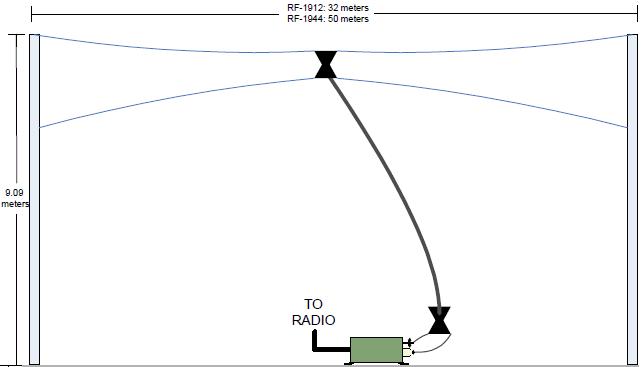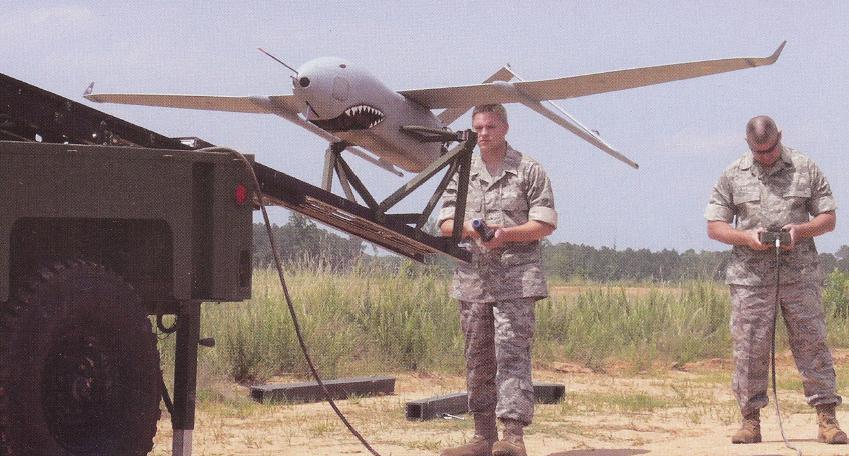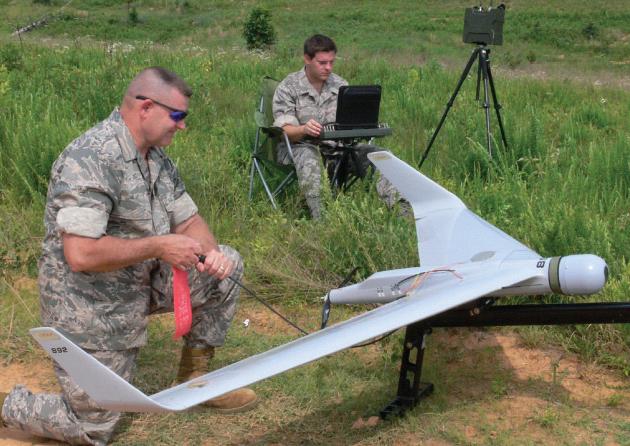This summarizes a selection of applications for the Experimental Radio Service received by the FCC during January, February, and March 2012. These are related to radar, Amateur Radio, spread spectrum, white space, spacecraft telemetry, propagation testing, satellites, smart grid, femtocells, machine-to-machine communications, ad hoc networks, 4G backhaul, electronic warfare, and robotics. The descriptions are listed in order of the lowest frequency found in the application.
Archive for the ‘M2M’ Category
Coldplay’s Wireless Hardware Startup
Tuesday, March 27th, 2012I was amused to see a company with the same name as the musical group Coldplay file an FCC application. That turned to surprise when I saw it was, indeed, the group.
Experimental Radio Applications at the FCC
Wednesday, November 3rd, 2010This summarizes a selection of applications for the Experimental Radio Service received by the FCC during October 2010. These are related to ultra-wideband, machine-to-machine, satellite, GSM, white space, and radar.
What do I mean by “selection?” I look at all applications for new experimental license or special temporary authority (ignoring renewals, modifications of existing licenses, and transfers of control). From those, I pick the ones I find most interesting, which is most except for the following:
- GPS repeaters, such as those put in a factory to replicate a GPS environment for testing. (Note, however, that companies regularly get tripped up by not demonstrating compliance with separate NTIA requirements.)
- Short-term authority for video program production. Someone needs a video link to cover a golf tournament or football game, perhaps by using flight-test telemetry bands (with that coordinator’s permission) for a day.
- Demonstrations for customers. Demonstrations at trade shows.
- An application very similar to one covered recently.
- Applications too vague or lacking enough detail to write much about. If applications are very lacking, FCC staff will sometimes ask for more information.
- Electromagnetic compatibility (EMC) compliance testing including RF immunity testing for compliance with European regulations.
- RF integration testing. (A radar from company A is paired with telemetry from company B and installed on a ship from company C.)
- Applications for general-purpose antenna test ranges.
- Applications for which confidentiality treatment has been sought. Companies can do this under the FCC’s rules, but I suspect it’s overdone at times. The request for confidentiality is made public, and may have some details. (A couple of times I have seen companies put what I think is the confidential information in the confidentiality request.) That, and a bit of independent research, can give me an idea what they’re up to. If I can make an educated guess, I will, saying so.
On to October’s applications:
- Zimmerman Associates filed an application (with supporting exhibits) for special temporary authority to test the capability of using a full polarimetric UWB radar system for identifying roadside bombs and improvised explosive devices (IEDs). Testing is to be on 3100-5600 MHz at Fort A.P. Hill, Virginia. The prototype equipment uses time-modulated ultra-wideband (UWB) technology developed by Time Domain Corporation. It generates a signal that is position modulated; the position of the modulated pulse varies randomly in time so as to produce a spectrum that approximates Gaussian noise.
Ultra-Wideband: How Regulatory and Standardization Delays Slowed a Wireless Technology
Thursday, September 2nd, 2010The FCC recently issued an order denying reconsideration petitions in its ultra-wideband (UWB) proceeding. That effectively ends the 12-year UWB rulemaking process. Mitchell Lazarus recounts how UWB became bogged down at the FCC and in a failed standardization attempt in IEEE 802.
UWB, as authorized by the FCC, operates across 3.1 to 10.6 GHz, with very low power at any one frequency; its tendency to cause or receive interference is very low.
IEEE 802 attempted to create a UWB standard in IEEE 802.15.3a but did not, as neither of two competing proposals reached the necessary voting threshold for approval. One of the competing proposals, Multi-band Orthogonal Frequency Division Multiplexing (MB-OFDM), has since seen some consumer success in Wireless USB, which is based on a platform maintained by the WiMedia Alliance; data rates are up to 480 Mbps at a range of about 10 feet.
UWB was eventually standardized in IEEE 802.15.4a, where it exists as an alternative physical-layer to standard IEEE 802.15.4-2006, a standard for very low power, low data rate devices. (The IEEE 802.15.3 family is for higher data rates with higher power consumption.) It uses what was the other competing proposal in 802.15.3a, Direct Sequence UWB (DS-UWB). This standardized form of UWB has been commercialized for asset tracking and other location services, but not yet for consumer applications.
(more…)
Experimental Radio Applications at the FCC
Saturday, August 14th, 2010This summarizes a selection of applications for the Experimental Radio Service received by the FCC during July 2010. These are related to high-frequency data, military communications, environmental data collection, synthetic aperture radar, WiMAX, sensor networks, interference-resistant communications, LTE, rail transportation, air traffic control, white space networks, and RFID.
- Harris filed an application (with supporting exhibits) for experimental license to operate on various frequencies between 3 and 15 MHz to test an experimental high-frequency wideband waveform that is intended to operate at either 12 kHz bandwidth or 24 kHz bandwidth to allow faster data transfer via high-frequency communications.
- Harris also filed an application (with supporting exhibit) for experimental license to operate on 4.94-4.99 GHz in support of development of US Army’s Warfighter Information Network: Tactical (WIN-T) and Future Combat Systems (FCS) programs. Equipment is to consist of the HNRe2 Highband Network Radio, manufactured by Harris. Harris says the HNRe2 is comprised of four elements: 1) the Baseband Processing Unit, 2) the Highband RF Unit (HRFU), 3) an Inertial Navigation Unit (INU), and a GPS device. The HRFU further consists of an upconverter, a High-Powered Amplifier (HPA), a Switched Beam Antenna (SBA), a Low-Noise Amplifier (LNA), and a downconverter). The test network will consist of five fixed nodes and one mobile node. The FCC has asked Harris to justify extended testing in a band that is primarily allocated for non-government public safety use.
- Canon U.S.A. filed an application (with supporting exhibits) for special temporary authority to operate wireless devices in support of a private technology and product exhibition from September 1, 2010 through September 3, 2010 at the Jacob K. Javits Convention Center in New York, NY. Canon is planning to import many wireless devices from Japan to be used with displays during the exhibition. These devices are not FCC compliant and not expected to be FCC compliant until after the exhibition. Frequencies requested include 315.0-315.7 MHz, 2.40-2.50 GHz, 5.18-5.67 GHz, and 61.6-62.5 GHz. This application was granted on August 11.
Experimental Radio Applications at the FCC
Sunday, July 4th, 2010This summarizes a selection of applications for the Experimental Radio Service received by the FCC during June 2010. These are related to aircraft systems, WiMAX, sports telecast support, public safety communications, tactical cellular service, medical telemetry, satellite, antennas, radar, white-space devices, weapons telemetry, spacecraft communications, and broadcasting.
- AAI/Textron Systems Corporation filed an application (with supporting exhibits) for experimental license. The company wants to test its Shadow 200, Aerosonde, Orbiter and other unmanned aircraft systems. This is related to work for the United States Marine Corp. Operation is to be on 310-390 MHz, 902-928 MHz, 1090 MHz, 1350-1390 MHz, 1700-1859 MHz, and 4400-4999 MHz. Transmitting equipment is manufactured by Microhard Systems Corporation, Free Wave Technologies, Advanced Microwave Products, Global Microwave Systems, and Microair Avionics.
FCC staff has asked for several items of information before approving the application. The FAA operates in the frequency bands 328.6-335.4 MHz, 1090 MHz, and 1215-1390 MHz; FCC staff asks for coordination of these bands with the FAA Regional Office. In addition, the frequency bands 225-328.6 MHz and 335.4-399.9 MHz are used for military purposes, and the applicant was asked to coordinate with NTIA’s Interdepartment Radio Advisory Committee (IRAC).
- AAI/Textron Systems Corporation also filed an application (with supporting exhibits) for special temporary authority to operate on 420-450 MHz and 2000-2400 MHz for a government project apparently involving the Orbiter miniature unmanned aircraft system. There is not much information about the proposed operation, and FCC staff has asked for more details.
In correspondence to the applicant, FCC staff notes that the “Aerospace & Flight Test Radio Coordinating Council (AFTRCC) oversees the frequency bands; 1435-1525 MHz, 2310-2320 MHz, and 2345-2390 MHz. These frequency bands need to be removed or need to be prior coordinated.”
- Sportvision filed an application (with supporting exhibits) for special temporary authority for testing of an automobile race track wireless data system that is to provide data communications between vehicles in a race track and one or more fixed base stations installed along a track. Operation is to be on 2395-2400 MHz.
One application seen for this system is video image enhancement for television broadcasting of automobile racing events. The would allow television viewers to see, displayed on screen, the real-time location of cars during a racing event.
The vehicles would be equipped with GPS receivers and other sensors that generate a data packet every 200 milliseconds. The wireless system would collect those packets and deliver them to a control station in real time. “The radio itself is a direct sequence spread spectrum unit, using production radios for 2.4 GHz. The system may ultimately be deployed on an unlicensed basis in the 2.4 GHz band or elsewhere, but the high noise levels in that band in the test locations (commercial automobile race tracks) are unsuitable for development and testing of the product.”
“An Intersil baseband processor performs the Direct Sequence modulation and demodulation. It is part of a five-chipset developed for the 802.11b standard. It uses 1/4th of the standard 802.11 speed resulting in a narrow occupied RF bandwidth.”
The frequency band requested is allocated on a primary basis to the Amateur Radio Service, and coordination is to be performed with the ARRL. This application was granted on June 4.
Recent Experimental Radio Filings at the FCC
Sunday, January 10th, 2010Companies request permission from the FCC to test cell phone jamming, antenna-induced interference, millimeter-wave transmission, RFID, radar, and remote-controlled streetlights.
(more…)
Adapting EV-DO to Limited Link Budgets
Wednesday, December 30th, 2009EV-DO (Evolution – Data Optimized) is a popular name of 3GPP2’s 3G air interface for high-speed data. The specification calls it High Rate Packet Data, or HRPD. At the December 3GPP2 meeting, a new framework was proposed that would modify HRPD to allow it to perform better in limited link-budget environments, such as in satellite and machine-to-machine (M2M) applications. The new system is called EXtended Cell High Rate Packet Data, or xHRPD. Contributing companies include TerreStar, DBSD North America (ICO), Skyterra, and Qualcomm.
(more…)


